Key Takeaways
1. Entanglement: The Spooky Quantum Connection
"Entanglement is not one but rather the characteristic trait of quantum mechanics."
Quantum entanglement is a phenomenon where two or more particles become inexorably linked, regardless of the distance between them. This bizarre effect allows for instantaneous communication between entangled particles, seemingly defying the speed of light limit set by Einstein's theory of relativity.
Key aspects of entanglement:
- Particles can be entangled in various properties, such as spin or polarization
- Measuring one particle instantly affects its entangled partner
- The effect persists even when particles are separated by vast distances
- Einstein famously referred to this as "spooky action at a distance"
Entanglement challenges our fundamental understanding of reality, causality, and the nature of information in the universe.
2. The Birth of Quantum Theory: Planck's Constant
"Planck had put forward a new, previously unimagined thought, the thought of the atomistic structure of energy."
Max Planck's discovery of the quantum of action in 1900 marked the birth of quantum theory. Planck introduced the idea that energy is emitted and absorbed in discrete packets, or quanta, rather than continuously.
Planck's constant (h):
- Fundamental constant of nature
- Relates a photon's energy to its frequency: E = hν
- Explains the ultraviolet catastrophe in black body radiation
- Led to Einstein's explanation of the photoelectric effect
This revolutionary concept laid the foundation for the development of quantum mechanics and our understanding of the microscopic world.
3. Wave-Particle Duality: De Broglie and Schrödinger
"After long reflection in solitude and meditation, I suddenly had the idea, during the year 1923, that the discovery made by Einstein in 1905 should be generalized by extending it to all material particles and notably to electrons."
Louis de Broglie's hypothesis that matter exhibits wave-like properties, combined with Erwin Schrödinger's wave equation, established the wave-particle duality as a fundamental principle of quantum mechanics.
Key developments:
- De Broglie wavelength: λ = h/p (where p is momentum)
- Schrödinger's wave equation: describes quantum states and their evolution
- Wave function (ψ): represents the quantum state of a system
- Born's interpretation: |ψ|² gives the probability density of finding a particle
These concepts revolutionized our understanding of matter and energy, leading to technologies like electron microscopes and explaining phenomena such as atomic orbitals.
4. Uncertainty and Complementarity: Heisenberg and Bohr
"We will first understand how simple the universe is when we recognize how strange it is."
Heisenberg's uncertainty principle and Bohr's complementarity principle are cornerstone ideas in quantum mechanics that challenge classical notions of measurement and reality.
Uncertainty principle:
- Δx · Δp ≥ ħ/2 (where ħ = h/2π)
- Limits precision in simultaneously measuring conjugate variables
- Applies to position-momentum, energy-time, and other pairs
Complementarity principle:
- Wave and particle aspects are mutually exclusive but complementary
- Measurement setup determines which aspect is observed
- Exemplified by the double-slit experiment
These principles highlight the probabilistic nature of quantum mechanics and the role of observation in determining reality.
5. Einstein's Challenge: The EPR Paradox
"God does not play dice with the universe."
Einstein's discomfort with the probabilistic nature of quantum mechanics led to the famous EPR (Einstein-Podolsky-Rosen) thought experiment, challenging the completeness of quantum theory.
EPR argument:
- Proposed existence of "hidden variables" to explain quantum correlations
- Argued for local realism: events in one place shouldn't instantly affect distant locations
- Suggested quantum mechanics was incomplete
The EPR paradox sparked intense debates about the nature of reality and the foundations of quantum mechanics, leading to further theoretical and experimental developments.
6. Bell's Theorem: Proving Quantum Weirdness
"Bell's theorem is the most profound discovery of science."
John Bell's groundbreaking theorem provided a way to experimentally test the predictions of quantum mechanics against local hidden variable theories.
Bell's inequality:
- Mathematical formulation to distinguish quantum mechanics from local realism
- If violated, supports quantum mechanics and nonlocality
- If upheld, supports local hidden variable theories
Bell's work transformed the EPR paradox from a philosophical debate into a testable scientific question, setting the stage for crucial experiments in quantum physics.
7. Experimental Confirmation: From Aspect to Zeilinger
"Einstein said that if quantum mechanics were correct then the world would be crazy. Einstein was right—the world is crazy."
A series of groundbreaking experiments confirmed the predictions of quantum mechanics and the reality of entanglement, with Alain Aspect's work being particularly significant.
Key experiments:
- Clauser and Freedman (1972): First test of Bell's inequality
- Aspect et al. (1982): Closed locality loophole with fast switching
- Zeilinger group: Extended tests to greater distances and with different particles
- Gisin et al. (1998): Demonstrated entanglement over 10 km in optical fibers
These experiments consistently violated Bell's inequality, providing strong evidence for the nonlocal nature of quantum mechanics and against local hidden variable theories.
8. Triple Entanglement: GHZ and Beyond
"Einstein's 'elements of reality' do not exist. No explanation of the beautiful dance among the three particles can be given in terms of an objectively real world."
The GHZ (Greenberger-Horne-Zeilinger) state represents a powerful extension of entanglement to three or more particles, providing an even stronger refutation of local realism.
GHZ advantages:
- Allows for Bell's theorem without inequalities
- Provides perfect correlations among three particles
- Demonstrates quantum nonlocality more directly than two-particle entanglement
The study of multi-particle entanglement has opened new avenues in quantum information theory and potential applications in quantum computing.
9. Quantum Teleportation: Science Fiction Becomes Reality
"Quantum mechanics is the weirdest invention of mankind, but also one of the most beautiful."
Quantum teleportation, the transfer of a quantum state from one location to another, demonstrates the practical application of entanglement in quantum information processing.
Teleportation process:
- Utilizes entanglement as a resource
- Requires both quantum and classical communication channels
- Destroys the original quantum state in the process
- Achieved experimentally with photons, atoms, and ions
While not the same as science fiction teleportation, this technique has important implications for quantum computing and secure communication.
10. Philosophical Implications: Redefining Reality and Causality
"The conclusions from Bell's theorem are philosophically startling; either one must totally abandon the realistic philosophy of most working scientists or dramatically revise our concept of space-time."
The confirmation of quantum entanglement forces us to reconsider fundamental concepts in physics and philosophy.
Philosophical challenges:
- Nature of reality: Is the world inherently probabilistic?
- Locality: How can distant events be instantaneously correlated?
- Causality: Does quantum mechanics allow for retrocausality?
- Free will: How does quantum indeterminism affect human choice?
Entanglement suggests a deeper, more holistic view of reality where separate parts of the universe are fundamentally interconnected in ways that defy our classical intuitions.
Last updated:
FAQ
What’s Entanglement by Amir D. Aczel about?
- Exploration of quantum entanglement: The book investigates the phenomenon of quantum entanglement, where particles remain mysteriously linked across any distance, defying classical physics.
- Historical and scientific journey: It traces the development of quantum mechanics, highlighting key experiments and the contributions of major physicists like Einstein, Bohr, Schrödinger, and Bell.
- Philosophical and technological implications: The narrative delves into the philosophical challenges entanglement poses to our understanding of reality and locality, and connects these ideas to emerging technologies like quantum cryptography and teleportation.
Why should I read Entanglement by Amir D. Aczel?
- Accessible explanation of quantum concepts: The book breaks down complex quantum ideas, using clear language, diagrams, and repeated explanations to ensure understanding for readers without a physics background.
- Human side of science: It weaves in personal stories and anecdotes about the scientists behind the discoveries, making the history of quantum mechanics engaging and relatable.
- Connection to modern technology: Readers gain insight into how entanglement underpins cutting-edge technologies, linking abstract theory to real-world applications and future innovations.
What are the key takeaways from Entanglement by Amir D. Aczel?
- Entanglement is real and tested: Quantum entanglement is a genuine, experimentally confirmed phenomenon that challenges classical ideas of locality and realism.
- Bell’s theorem and GHZ states: These provide rigorous proofs of quantum nonlocality, showing that no local hidden-variable theory can explain quantum correlations.
- Foundation for quantum technology: Entanglement is not just a theoretical curiosity—it is the basis for quantum cryptography, teleportation, and other emerging technologies.
What are the best quotes from Entanglement by Amir D. Aczel and what do they mean?
- Abner Shimony: “The conclusions from Bell’s theorem are philosophically startling; either one must totally abandon the realistic philosophy of most working scientists or dramatically revise our concept of space-time.” This highlights the profound impact of Bell’s theorem on our worldview.
- David Mermin: “So farewell, elements of reality!” This quote underscores the departure from classical realism required by quantum mechanics.
- John Bell: “In view of the general success of quantum mechanics, it is very hard for me to doubt the outcome of such experiments. However, I would prefer these experiments... to have been done and the results on record.” Bell expresses the importance of experimental confirmation.
- Alain Aspect: “Bohr had an intuitive feeling that Einstein’s position, taken seriously, would conflict with quantum mechanics. But it was Bell’s theorem that materialized this contradiction.” Aspect credits Bell for making the philosophical debate testable.
How does Amir D. Aczel define quantum entanglement in Entanglement?
- Linked quantum states: Entanglement is when two or more particles become so deeply connected that the state of one instantly determines the state of the other, regardless of distance.
- Single system, not individuals: The book emphasizes that entangled particles are best understood as parts of a single quantum system, not as independent entities.
- Defies classical intuition: This phenomenon challenges classical ideas of locality and causality, leading Einstein to call it “spooky action at a distance.”
How does Entanglement by Amir D. Aczel explain the wave-particle duality and superposition principle?
- Wave-particle duality: The book recounts experiments like Young’s double-slit, showing that quantum entities (light, electrons, even molecules) exhibit both wave and particle characteristics.
- Superposition principle: Quantum systems can exist in multiple states simultaneously, such as a particle going through both slits at once, until measured.
- Measurement and collapse: The act of measurement causes the system to “collapse” into a definite state, a concept that challenges classical notions of reality.
What is Planck’s constant and its significance in quantum mechanics according to Entanglement by Amir D. Aczel?
- Quantum of action: Planck’s constant (h) is the fundamental unit that quantizes energy exchanges in quantum systems, marking the departure from classical continuity.
- Foundation for quantum theory: Its introduction solved the ultraviolet catastrophe and led to accurate models of black-body radiation.
- Central to atomic models: Planck’s constant underpins Bohr’s model of the atom, explaining discrete energy levels and spectral lines.
How does Amir D. Aczel describe the Copenhagen Interpretation in Entanglement?
- Probabilistic nature of quantum mechanics: The Copenhagen Interpretation, led by Niels Bohr, asserts that quantum systems exist in superpositions until measured, at which point they assume definite properties.
- Role of the observer: Measurement is fundamental; the observer’s act determines the outcome, challenging classical realism.
- Philosophical debates: This interpretation sparked intense debates, especially with Einstein, over the completeness and reality of quantum mechanics.
What is Heisenberg’s uncertainty principle and how is it presented in Entanglement by Amir D. Aczel?
- Limit on precision: The uncertainty principle states that certain pairs of properties, like position and momentum, cannot both be known exactly at the same time.
- Microscope analogy: The book uses Heisenberg’s thought experiment to illustrate how measuring one property disturbs the other.
- Probabilistic universe: This principle introduces inherent uncertainty into quantum mechanics, contrasting with the determinism of classical physics.
What is Bell’s theorem and why is it important in Entanglement by Amir D. Aczel?
- No local hidden variables: Bell’s theorem proves that no local hidden-variable theory can reproduce all quantum predictions, especially for entangled particles.
- Experimental testability: Bell derived inequalities that can be tested in the lab; violations of these inequalities confirm quantum mechanics and nonlocality.
- Philosophical impact: The theorem forces a choice between locality and realism, fundamentally altering our understanding of reality.
How does Amir D. Aczel explain the experiments testing entanglement in Entanglement?
- Clauser-Freedman experiment: This was the first definitive test of Bell’s inequalities, supporting quantum mechanics and ruling out local hidden variables.
- Aspect’s experiments: By dynamically switching measurement settings, Aspect’s work closed loopholes and provided strong evidence for nonlocality.
- Long-distance tests: Experiments like Gisin’s ten-kilometer fiber optic test demonstrated entanglement over large distances, confirming “spooky action at a distance.”
What is the GHZ state and its significance in Entanglement by Amir D. Aczel?
- Definition of GHZ state: GHZ (Greenberger-Horne-Zeilinger) states involve three or more particles entangled in a way that allows a more direct demonstration of quantum nonlocality.
- Stronger proof than Bell’s theorem: GHZ states provide a simpler and more powerful argument against local realism, showing perfect correlations that cannot be explained classically.
- Experimental realization: The book describes how GHZ states have been produced in laboratories, confirming theoretical predictions and connecting to topological ideas like Borromean rings.
Review Summary
Entanglement receives mixed reviews, with praise for its accessible explanation of quantum physics concepts and historical context. Readers appreciate the clear writing style and engaging narrative approach. However, some criticize the excessive biographical details and repetitive content. The book is commended for its coverage of entanglement experiments and theoretical developments, though some find the explanations lacking depth. Overall, it's considered a good introduction to the topic for general readers, albeit with occasional pacing issues and oversimplifications.
Similar Books

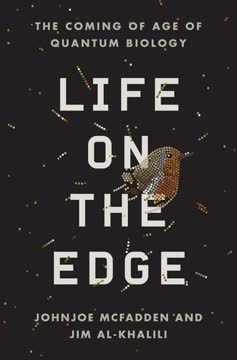
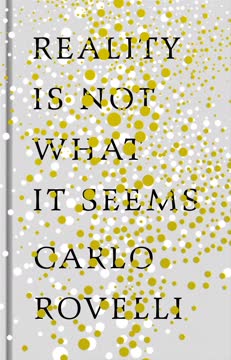
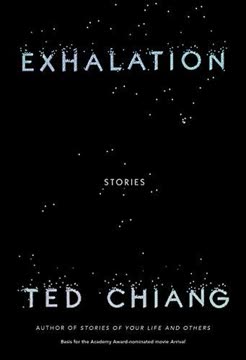
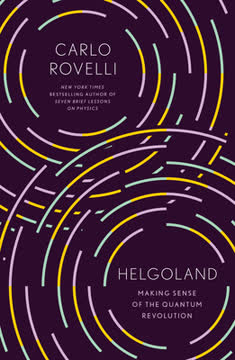
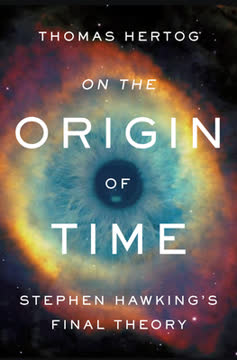

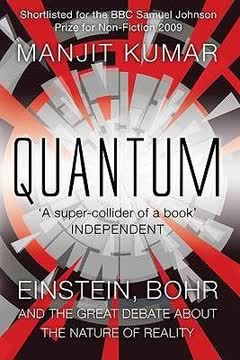
Download PDF
Download EPUB
.epub digital book format is ideal for reading ebooks on phones, tablets, and e-readers.





